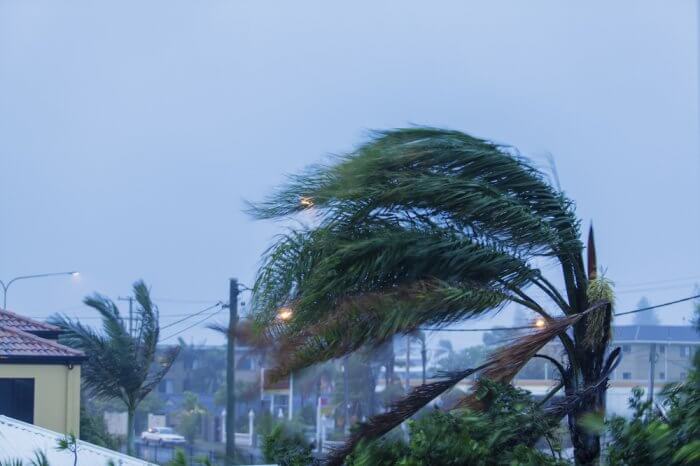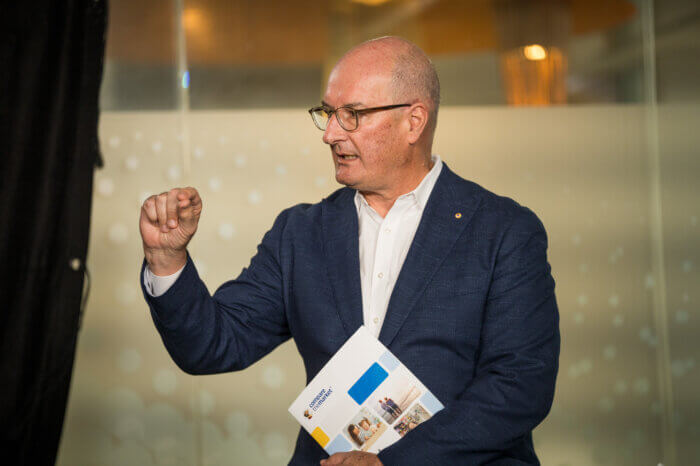
Compare the Market’s Economic Director David Koch has issued a stark warning to borrowers hoping for a rate cut ahead of the Reserve Bank of Australia’s next interest rate decision on Melbourne Cup Day: If inflation doesn’t behave, the RBA could go nuclear and a rate hike could be on the horizon.
“The September quarter CPI figure, due out on October 29, is the one to watch,” Mr Koch said.
“Unemployment is on the rise, which is a warning sign that the RBA may need to cut rates and get the economy moving again.
“But if underlying inflation (that’s the trimmed mean) comes in at 3% or above, the Reserve Bank may have no choice but to raise rates. That is the nuclear option.
“At this stage, they really could go either way.”
The latest CPI release for August, released in September, showed headline inflation rose to 3%. But according to Mr Koch, it’s the quarterly inflation data that will paint a clearer picture around factors that influence inflation, including export demand and the general state of the global economy.
“We’ve had a couple of back-to-back monthly CPI data figures come in slightly higher than expected, which is why we saw a hold on rates last month,” Mr Koch said. “The RBA has to be so careful right now. It’s a bit of a balancing act and all about keeping that inflation figure inside the target rate.”
Mr Koch pointed to recent comments from RBA Governor Michele Bullock, who has cautioned Australians not to assume inflation will continue to fall.
“She’s been uncertain for weeks. If we get a number like 3.2% or 3.3%, the RBA could increase rates to bring inflation back under control,” Mr Koch said.
“It’s 50/50. If inflation comes in around 2.5%, we could see a cut. But anything higher will make the RBA cautious and anything above 3% could trigger a hike.”
Borrowers saw rates slashed in February, May and August this year, with interest rates cut by a quarter percent each time.
There are still two more RBA board meetings before the end of the year. If rates drop even one more time in 2025, it could have a significant impact on household budgets.
| Loan size | Impact of a 0.25% rate cut | Impact of x2 0.25% (0.50%) | Impact of x3 0.25% rate cuts (0.75%) | Impact of x4 0.25% rate cuts (1%) |
| $500,000 | $81 | $161 | $256 | $318 |
| $600,000 | $97 | $193 | $307 | $382 |
| $750,000 | $122 | $242 | $384 | $478 |
| $900,000 | $146 | $290 | $461 | $573 |
| $1,000,000 | $162 | $322 | $512 | $637 |
| *Calculations assume an owner-occupied loan with a variable interest rate of 6.3% that is reduced to 5.3% after four 0.25% rate cuts passed on in full by the bank. It assumes a 30-year loan term, with no ongoing fees. This does not take into account the reduction of the loan balance over time. | ||||
Regardless of the RBA’s decision, Mr Koch said many borrowers had the power to reduce interest on their mortgage by negotiating lower rates.
“Switching could deliver better relief than a standard RBA rate cut because the difference between rates across lenders can be enormous,” Mr Koch said.
“The average variable rate is about 5.75%, but we have rates as low as 5.34%. Meanwhile, there are two-year fixed rates around 4.75% – that’s equivalent to four RBA rate cuts. This could be a great option for borrowers who are willing to fix their rate.
“If you can lock in a full percentage point difference for even six months, you could be ahead. Don’t wait for the RBA. Take control of your own rate.”
For more information, please contact:
Phillip Portman | 0437 384 471 | [email protected]
Compare the Market is a comparison service that takes the hard work out of shopping around. We make it Simples for Australians to quickly and easily compare and buy insurance, energy, and home loans products from a range of providers. Our easy-to-use comparison tool helps you look for a range of products that may suit your needs and benefit your back pocket.








